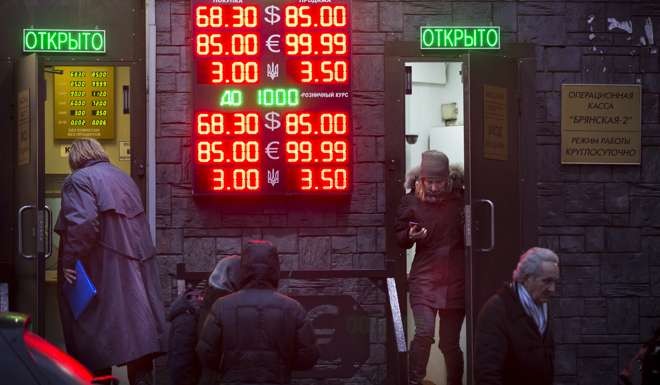
Poon said the loans are mostly fixed in yuan or roubles, rather than in dollars, so the two sides may avoid currency volatilities.

Harbin Bank Co said it is leading a group of Chinese lenders to provide 10 billion yuan (US$1.5 billion) in syndicated loans to Russia’s state-run development bank, as it looks north of the border for business.
The loan to Russia’s State Corporation Bank for Development & Foreign Economic Affairs, also known as Vnesheconombank (VEB), will be used for a range of unspecified investment projects for three years, with an option to extend them for another three years, according to a report by SKRIN Newswire. However, the bank’s official statement said the funds will be earmarked for Sino-Russian trades and infrastructure developments.
“This deal marks the first collaboration between Chinese regional commercial banks and a Russian policy bank,” said Harbin Bank’s chairman Guo Zhiwen. “It will open a new chapter in our syndicate in financing foreign trades.”
Harbin Bank, based in China’s northeastern rust belt industrial province of Heilongjiang, is looking to China’s northern neighbour for growth, as it faces increasing bad loans from shuttering state factories and industries in its home base. Concurrently, bigger lenders like the Industrial & Commercial Bank of China and Bank of China are pursuing so-called baikalbonds, or yuan-denominated debt issued in Russia to fund business investments across the Sino-Russia border.
“This is not a surprising development. While Russia’s economy had become more challenged in recent years with the dropping of oil prices and the tensions with US and Europe, mainland banks have had close partnerships lending into Russia. China has been Russia’s key source of funds with central government’s approval during these years,” said Vicks Poon, Hong Kong-based head of investment advisory at Fubon Bank.

“The startup stage of Harbin’s Sino-Russian business will soon be completed and the earnings contribution of the segment should increase gradually going forward,” said Johannes Au, Hong Kong-based banking analyst at ABC International, a securities arm of the Agricultural Bank of China, who sees Harbin’s push into Russia as a welcome development while asset quality in Heilongjiang is still deteriorating.
The Harbin Bank-led lending also offers a lifeline to Russian banks, which have been blocked from accessing Europe’s capital markets since 2014 European Union economic sanctions. VEB in the past 12 months has had to stop financing a string of infrastructure projects in Russia, including a chicken hatchery, for lack of funds, according to Russian media reports.
However, after two years of suspension, Deutsche Bourse’s Euroclear arm in July readmitted Russian state bonds into its system, which allowed Russia to sell bonds to European investors.
VEB and Harbin Bank agreed that the loan proceeds will not be strictly tied to any particular investment projects, according to a September 2 report by CBonds Europe, an online publisher.
“Consequently, the funds raised may be channelled to finance a wide range of Vnesheconombank’s investment and export projects, in particular, ambitious projects of the Russian-Chinese trade and economic cooperation,” CBonds reported.
The remaining Chinese banks are Inner Mongolia-based Baoshang Bank, Henan-based Bank of Zhengzhou, Liaoning-based Bank of Fuxin, Jiangxi-based Bank of Ganzhou, Shandong-based Bank of Weifang, Wuhan-based Bank of Jiujiang, New China Trust, and Liaoning-based Bank of Chaoyang.
Harbin Bank had 478 billion yuan of assets as at the end of June. Its latest reported Sino-Russian related income in the first half rose 33 per cent from last year, reaching 1.75 per cent of the bank’s latest total operating income of 6.9 billion yuan.
Harbin’s total Sino-Russian exposures – both on and off-balance sheets included – have surged 125 per cent, while the volume of rouble exchange the bank handles shot up by 266 per cent.
“Geographically, the bank’s new NPL mainly came from Harbin’s core business area, the Heilongjiang region, where the NPL ratio rose 30 basis points to 2.11 per cent in the first half of 2016,” said Au.